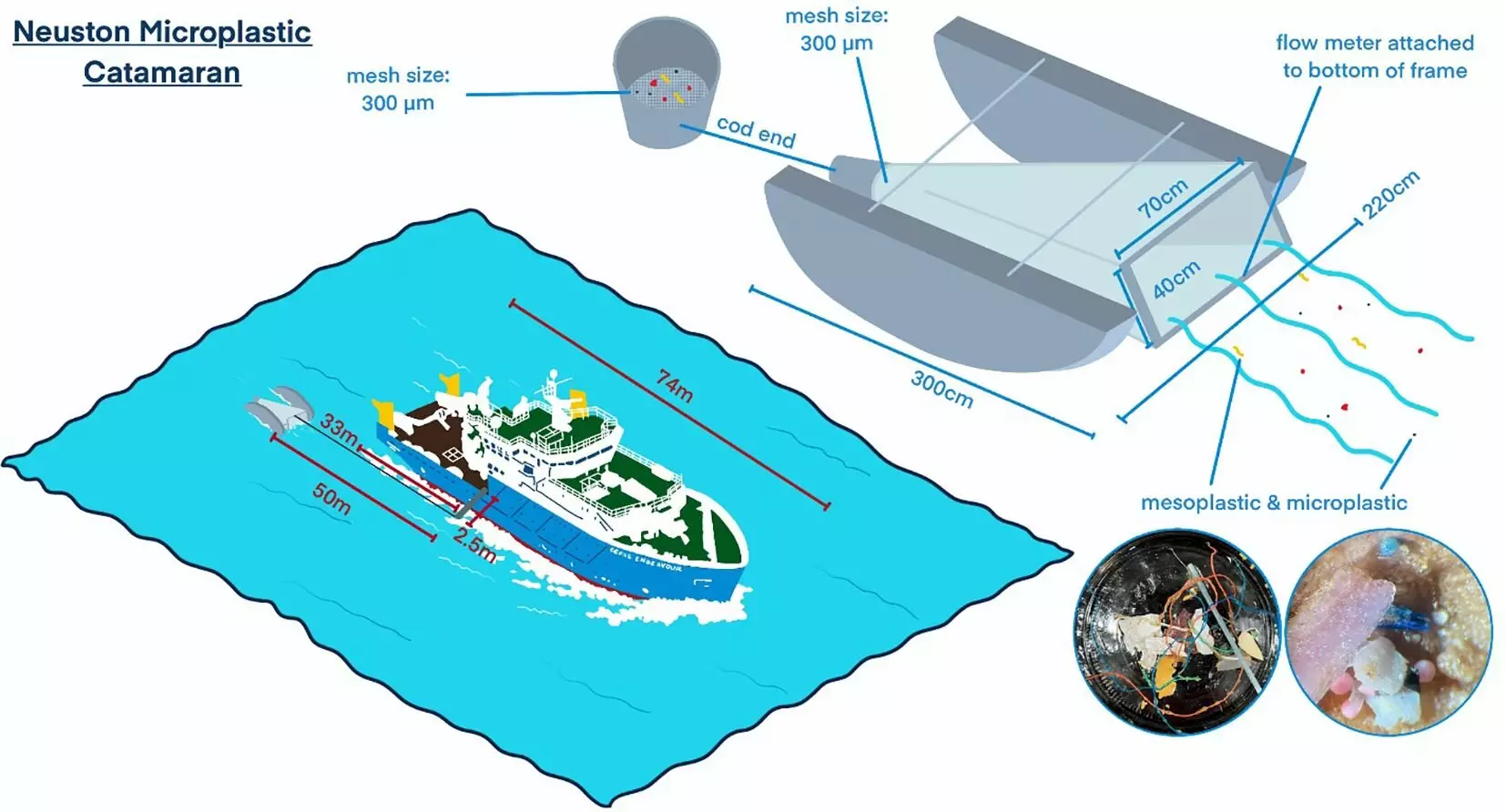Microplastic pollution has become a pervasive environmental issue, with its effects increasingly documented in various ecosystems, particularly in marine environments. The conventional imagery often conjured by the topic involves vibrant wildlife ensnared in large plastic debris or minute particles camouflaged against sandy beaches. However, these surface-level observations only scratch the surface of a much deeper and more complex problem. Each year, an astonishing estimated 12.7 million tons of plastic waste is introduced to the world’s oceans through various channels, including riverine input and activities related to fishing and shipping. While we have a tangible understanding of large plastic debris, far less is understood about the hidden microplastic sinks lurking beneath the ocean’s surface.
A groundbreaking study published in *Frontiers in Marine Science* sheds light on the concerning microplastic concentrations in the North Sea, as researched by Dr. Danja Hoehn and her colleagues from the Center for Environment, Fisheries and Aquaculture Science in the U.K. Utilizing a specialized tool known as the Neuston Microplastic Catamaran, the researchers collected data in 2022 by effectively capturing microplastics from the ocean’s surface. Their findings revealed staggering concentrations of up to 25,000 microplastic fragments per square kilometer in southern regions of the North Sea, thus affirming that this area is a significant microplastic sink. Encouragingly, similar hotspots of microplastic concentration highlight the urgency for more comprehensive investigations in various marine environments.
Interestingly, the geographical disparities in microplastic levels engender an urgency for nuanced understanding rather than assumptions based on surface observations alone. The researchers noted that an overwhelming 67% of the collected microplastics were polyethylene fragments—ubiquitous plastic found in items ranging from shopping bags to water bottles. Another 16% came from polypropylene, prevalent in packaging and plastic textiles, while 8% was comprised of polystyrene, typically found in disposable items and packaging materials. Such a distinctive composition suggests a significant reliance on a few types of plastic materials in consumer items, echoing the larger problem of single-use plastics and their fallout.
Meanwhile, the presence of mesoplastics and macroplastics, albeit in lower quantities, indicates that larger items are undergoing breakdown processes in the marine environment, potentially contributing further to the microplastic crisis. Alarmingly, remnants of microbeads—banned in the U.K. since 2018—serve as reminders of the persistence of pollutants in the aquatic ecosystem, likely originating from external sources.
Quantifying the Scale of the Problem
In identifying microplastic hotspots in the North Sea, the study provides compelling evidence of the wider implications of global plastic consumption patterns. These localized concentrations serve as stark reminders that current pollution levels in the U.K. are dwarfed by numbers reported from other regions, where concentrations have skyrocketed—to over 1 million items per square kilometer in the Canary Islands as recently as 2024. Such stark contrasts reveal a broader narrative; while the North Sea contamination levels are concerning, they underscore the need for intensified regional and international efforts to address the plastic pollution crisis.
As the world grapples with the implications of rising plastic consumption—exceeding 400 million tons annually—the time for action is undeniably pressing. National initiatives, such as the U.K’s Marine Strategy aiming to develop tangible microplastic indicators within marine sediments, and international efforts through the North-East Atlantic Environmental Strategy and the UN Environmental Agency’s legally binding framework targeting a resolution to end plastic pollution by 2040 are crucial. However, these interventions must be paired with robust public awareness campaigns and lifestyle changes to curtail plastic use at the grassroots level.
The hidden crisis of microplastic pollution in oceans like the North Sea serves as a potent reminder of the ecological footprints left by human consumption patterns. Understanding these dynamics is essential not only for immediate remedial actions but for ensuring the integrity of marine ecosystems for future generations. Addressing microplastic pollution may seem daunting, but it is a necessary endeavor for the health of our planet.


Leave a Reply